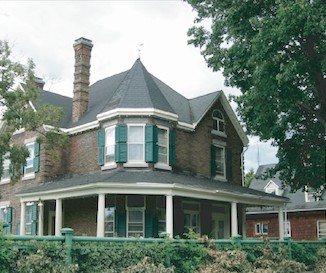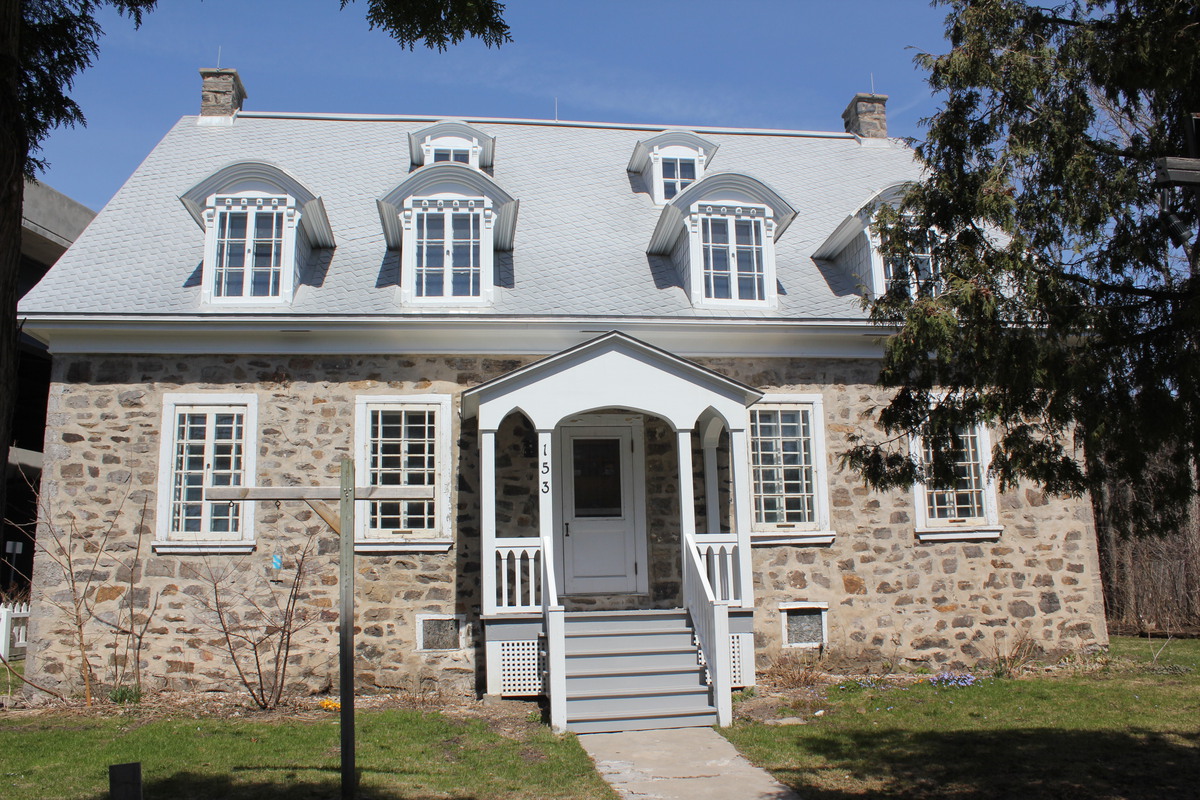Alerts |
2025-01-01
Règlement sur le stationnement de nuit - Hiver 2024-2025Règlement sur le stationnement de nuit - Hiver 2024-2025 |


Site Planning and Architectural Integrity Program (SPAIP)
Site Planning and Architectural Integrity Program (SPAIP)
Site Planning and Architectural Integrity Program (SPAIP)
What is a SPAIP?
A SPAIP is a qualitative assessment incorporated into urban planning regulations to provide guidance for work done on buildings. The SPAIP complements other regulations—such as those pertaining to zoning and construction. The Town is therefore able to exert a degree of quality control over the architectural aspects of permit or certificate applications. Projects are assessed according to a system of criteria and objectives established for each sector, to ensure proper integration with existing building environments. This measure allows for a more flexible approach in comparison to other normative by-laws.
Building owners wishing to carry out renovation projects must request an evaluation of their proposed project by the planning advisory committee along with their permit application. Applications must be submitted to the planning advisory committee (PAC) (comité consultatif en urbanisme (CCU) in French) and municipal council. Applicants should allow six to eight weeks for processing of their request after they have submitted the duly completed permit applications to the urban planning department.
INFO: permis@sadb.qc.ca | 514-457-5720
Steps to follow
- Identify the building’s architectural style (consult the generic guide – architectural styles). Contact the Town’s urban planning department for assistance, if necessary;
- Consult the pamphlets describing various components, such as doors and windows, roofs, exterior cladding and stoops;
- Favour the conservation and maintenance of components rather than replacement;
- Determine the scope of work;
- Submit your permit application to the Town.
Architectural styles
Before you identify the original period features associated with a building’s era of construction, its architectural style must be determined.
This makes it possible to:
- Focus on architectural features appropriate to each style;
- Identify the general reference period, as a guide for restoration work.
Moreover, some homes are part of a series of semi-detached or adjoining buildings. It is important that you consider the unit as a whole before starting any work. A neighbouring building of the same type may serve as a comparison sample and could be useful as a reference to document or confirm the features of the home that is to undergo maintenance, renovation or restoration.
>> To learn more about architectural styles, please consult the page Heritage.
French-style architecture prevailed throughout the French regime. This style further developed along the shores of the St. Lawrence and the main rivers in the Laurentian Valley.
Doors and windows:
- Openings are few and symmetrical;
- Small-paned casement windows; Functioning shutters;
- Few or no dormer windows.
Siding materials:
- Quarry stone with massive stone chimneys.
Roofs and coping:
- Straight double-pitched roof;
- Traditionally covered with cedar shingles;
Galleries, stoops and verandas:
- No gallery or veranda;
- Shallow foundation or raised portico.
At the beginning of the 19th century, French architecture collided with classic English architecture.
Doors and windows:
- Many openings;
- 6-pane double casement windows;
- 4-pane gable dormers.
Siding materials:
- Symmetrical composition of facade, covered in wood, shingles or panels.
Roofs and coping:
- Medium double-pitched roof (45 degrees);
- Traditional sheet metal or cedar shingle covering.
Galleries, stoops and verandas:
- Upturned overhang extending over the facade and sometimes covering a gallery that runs along the entire facade.
Mansard houses are a popular, modest version of Second Empire residential architecture. The main feature of these houses is the mansard roof.
Doors and windows:
- Rectangular or low arch opening;
- Large-pane casement windows;
- circular and arched dormers or gable dormers in the break.
Siding materials:
- Rectangular building body with stone, brick or wood board cladding.
Roofs and coping:
- Mansard, double-pitched roof, made up of break and a deck;
- traditional sheet metal covering.
Galleries, stoop and verandas:
- Often there is a portico or a balcony protected by an independent awning on one or more facades.

This artistic current is based on the use and reconciliation of past styles. It is a combination of a number of styles or elements from different eras and cultures.
Doors and windows:
- No typical openings;
- Variety of types of openings on a given building;
- Bay windows.
Siding materials:
- Mix of a number of materials and colours on a single building (brick, stone, decorative or polychrome shingles, etc.);
Roofs and coping:
- Irregular roof;
- Presence of gables or turrets;
- often with dormers;
- Varied ornamentation
Galleries, stoop and verandas:
- Presence of porches or open and ornamented balconies that often run along more than one facade.
This current, introduced to Quebec by the English, represents a desire for architecture that is more respectful of classical antiquity.
Doors and windows:
- Sash or large-pane casement window;
Siding materials:
- Smooth coverings: cut stone, parging, brick or wood boards.
Roofs and coping:
- Double-pitched or hip roof with medium or low pitch;
- Cornice projection (consoles or modillions).
Galleries, stoop and verandas:
- Main entrance with a porch or pediment;
- Presence of columns;
- Presence of porches on the Regency Cottage.
.jpg)
After the economic crisis of 1870, American Boomtown architecture developed. These houses are an economical, fast option for construction.
Doors and windows:
- Casement or large-pane sash windows;
- No dormers.
Siding materials:
- Clapboard or brick facing;
Roofs and coping:
- Flat or low-pitch roof toward the back;
- Ornamentation in the upper portion of the facade (coping, parapet, ornamental brick).
Galleries, stoop and verandas:
- Few projections except for a porch protected by an awning or a second-floor balcony.
.jpg)
This square-plan house is often on two levels with a four-sided tent roof.
Doors and windows:
- Roof, gabled, triangular or shed dormers, sometimes replaced by gables;
- Large-pane casement, casement with transom or sash windows, sometimes paired;
- Even distribution of openings.
Siding materials:
- Varied exterior coverings: brick, wood boards, cedar shingles, parging or other light coverings.
Roofs and coping:
- Low-pitch hipped roof (four sided);
- Traditional metal sheet covering.
Galleries, stoops and verandas:
- Covered gallery along the facade that may also run along the sides;
- Often there is a balcony on the second floor.
This style appeared at the end of the 19th century, after the standardization of materials and the demographic explosion.
Doors and windows:
- Panelled doors;
- Factory-built sash or casement windows in wood;
- As a rule no dormers.
Siding materials:
- Light covering: wood boards, asbestos-cement tiles, parging.
Roofs and coping:
- Variable pitched roof;
- More often medium double-pitched.
Galleries, stoops and verandas:
- Gallery covered with an independent awning.
Ce style apparait à la fin du XIXe siècle, suite à la standardisation des matériaux et l’explosion démographique.
Portes et fenêtres:
- Portes àpanneaux;
- Fenêtres à guillotine ou à battants usinées en bois
- Habituellement pas de lucarnes
Matériaux de revêtement:
- Revêtements légers : planches de bois, tuiles d’amiante- ciment, crépi.
Toitures et couronnements:
- Toiture à pente variable;
- Plus souvent à deux versants à pente moyenne.
Galeries, perrons et vérandas :
- Galerie couverte d’un auvent indépendant
After the Second World War, modern architecture became more widespread in most Western countries. The bungalow, also a product of modernity, appeared in the 1950s after having been popularized in the U.S. by architect Frank Lloyd Wright a few decades earlier.
Doors and windows:
- Importance of windows in a variety of shapes and dimensions and corner opening,
- picture windows;
Siding materials:
- Smooth or textured covering materials.
Roofs and coping:
- Flat roof;
- Low-pitched roof.
Galleries, stoops and verandas:
- Steps and stoop often in concrete;
- Protection of the entrance by a roof projection.
Doors and windows
Openings help to define a building’s character and exemplify the techniques and construction methods of a specific period. While essential for ventilation and lighting, doors and windows are also a key part of a building’s architectural makeup.
SIGNIFICANT CHARACTERISTICS OF DOORS AND WINDOWS
- Types (sash, casement, etc.);
- Materials;
- Dimensions (may vary according to hierarchy);
- Proportions;
- Location;
- Glazing;
- Specific decorative elements (trim, architraves, shutters, etc.);
- Colour;
- Other windowed building elements (dormers, oriels, enclosed porches).
CASEMENT WINDOWS
French-inspired casement windows are the oldest type of windows used on the island of Montreal. Originally made of wood, these windows are comprised of two parts: the two movable sashes that open towards the inside and the fixed frame. Some variations exist: grilles (four, six or twelve panes) and dual sash with transom. If they are original, casement windows should be made of wood.
Related architectural styles: French period architecture, traditional Québécoise, mansard house, American vernacular cottage.
Replacement models
SASH WINDOW
Sash windows, which likely originated in England, replaced casement windows in the middle of the last century. Generally of wood construction, sash windows have two frames—one fixed and one mobile. Various proportions are available (1/3 -2/3, half and half , combination).
Related architectural styles: Victorian eclectic, boom town house, cubic house, American vernacular cottage
Replacement models
COMBINATION FIXED/VENT WINDOW
Commonly used in twentieth century construction, this type of window combines a sash window and a fixed window.
Replacement models
SINGLE DOOR
DOUBLE DOOR
BALCONY DOOR
DOOR AND WINDOW WORK
It is preferable to maintain building elements and their original characteristics by opting to maintain and repair existing shutter mechanisms.
Maintenance
Maintenance ensures proper window operation and conservation. The main form of maintenance consists of cleaning. This extends the life of architectural elements and is less expensive in the long run.
Repair
Repair ensures that openings are returned to proper operation. In some cases, the fact that a building’s windows are damaged does not necessarily mean that all window elements have to be replaced. Repair or partial replacement with identical or fewer parts may be the simplest solution.
Replacement
If the condition of doors or windows does not allow repair, a partial or complete replacement will be necessary. In the case of an exceptional building or if the doors and windows still have their original features, a replica is always preferable. When replacing components, it is important to preserve the significant characteristics of doors and windows by ensuring that they match the original components as much as possible. The chosen replacement models must meet stylistic and technical criteria. New doors and windows must match the architectural style of the construction period and the original proportions.
Roofs and crowns
The top part of a building, a roof also comprises its finishing surface or cladding material. Roofs contribute significantly to a home’s volume. They are the dominant features that adorn the topmost part of buildings. The crown of a frontage (particularly the parapet, eave and false mansard) often comprises many details and are an important part of a building’s charm.
ROOF CHARACTERISTICS
>The most common types of materials
- Wood (cedar shingles or pine boards);
- Slate;
- Metal (sheet metal, copper, galvanized or stainless steel);
- Clay tiles (untreated or glazed)
- Asphalt singles
> Assemblies:
- Canadian-style;
- Pinched or standing seam;
- Batten seam;
> Colour;
> Technical components (vent, gutters, downspout, water box, heating wires and snow fence)
SLOPED ROOF
Gable roof
Pavillon roof
Mansard roof
Hip
FLAT ROOF
CROWN FEATURES
- Materials (wood, metal, brick, etc.);
- Decorative elements (consoles, modillions, etc.);
Types:
Parapet: A parapet is an extension of the wall above the roof level.
Eaves: An eave covers the entire wall and may be decorated with ornamental or non-ornamental consoles (simple or architrave)
False mansard: A false mansard is an inclined fascia with a lipped lower section
ROOF AND CROWN WORK
Maintenance
Maintenance may avoid the need for major repairs and enables the preservation of original crown elements that may be difficult to reproduce.
Regular maintenance consists of:
- Cleaning gutters (removing leaves)
- Removing snow and ice from overhangs and gutters
- Checking the condition of paint on eaves;
- Making sure the parapet is watertight
Repair
With the exception of spot repairs, roof repairs should be done by a master roofer. Slate and metal roofs can be repaired more easily.
An asphalt single roof has a much shorter useful life.
Replacement of components
When completely replacing roofs and eaves, it is preferable to maintain and preserve characteristic features. When extending a roof, the form should match the existing roof. The material chosen to cover an extension must be identical in type and form to the main building.
The addition or extension of a dormer must take the existing roof proportions into account. It is important to pay particular attention to the window insulation and build-out.
Projecting elements: porches, stoops, verandas and external staircases
Porches, stoops, verandas and external staircases are key elements of a building’s frontage. The loss of these features reduces the value of a building and alters its distinct character. Often decorated with handrails, railings, roofs and columns, they represent important decorative and architectural elements.
Porches, stoops and verandas have been traditional features of Quebec residential architecture since the nineteenth century, particularly as they serve as sun shields.
SIGNIFICANT CHARACTERISTICS OF PROJECTING ELEMENTS
• Materials (woof, wrought iron, cast iron);
• Location;
• Roof and related elements;
• Floors;
• Colour;
• Proportion;
• Decorative elements:
- Woodwork (wood mouldings);
- Railings (wood or wrought iron—often decorative);
- Handrails;
- Columns;
- Risers;
- Structural or decorative brackets.
WORKING ON PROJECTING ELEMENTS
Maintenance
Exterior paint or stain offers the best protection from rot and the elements. Regular maintenance can avoid the need for major and costly work.
Repair
Spot repairs of porches, stoops, stairs and verandas can avoid the need to completely replace these elements. Materials, woodwork and steel or iron structures can be repaired.
Replacement
When doing a full replacement, it is important to respect the significant characteristics of the existing element. Replacement with identical components is preferred.
Conservation of these elements helps to maintain the building’s consistency.
Replacement materials to be avoided
Aluminum;
PVC.
Wood cladding
The exterior cladding is the main part of the building envelope that protects the framework from the elements. It is part of the architectural composition of the frontage and one of the most visible building elements.
Wood is often used in traditional architecture in Quebec. Considered a light cladding, it is applied in the form of shingles or sheets.
MAIN CHARACTERISTICS OF WOOD CLADDING
Before undertaking any work, it is important to make a detailed analysis.
Reason for installation;
- Details of frames (wall angles, angles and openings);
- Wood species;
- Types:
Shingles: Shingles have been widely used since the seventeenth century to cover walls and roofs. Shingles are most often made of cedar or pine.
Vertical boards:
Side-by-side: This is the oldest and simplest wood covering method. These are of boards (usually pine) of varying width and height. They are nailed side-by-side directly onto the wall.
Tongued and grooved: These boards are tongue-and-groove assemblies.
With or without mouldings.
Joint cover: Vertical boards are the same width and joints are covered with wood strips. With or without mouldings.
Most common types of horizontal boards:
Clapboard: Clapboard has been in use since the nineteenth century. Clapboards are thinner at the top and are overlapped;
Rabbeted: Rabbeted boards are recessed along one edge and are overlapped with each other.
WOOD CLADDING WORK
It is preferable to maintain building elements and their original characteristics by opting for maintenance and repair. When components are in poor condition, they may be replaced by identical materials, if possible, in order to preserve the architectural character of frontages.
Maintenance
Maintaining exterior wood cladding limits renovation and renovation costs.
Cleaning is sometimes sufficient to eliminate dirt and deposit buildup from painted surfaces.
Paints and stains protect wood surfaces from the elements. Paint scaling should be dealt with promptly to avoid major deterioration. This problem may be an indication of water or moisture in the wall.
Repair
Insofar as possible, damaged elements should be repaired rather than replaced. Rotten, cracked or warped elements should be removed and replaced.
A board that is more than 40% damaged should be replaced entirely. However, if the problem is limited to a specific area, it would be preferable to cut out the affected section and replace it by a piece of the same dimension.
Obviously, it would be possible to use the ends of existing boards to make these repairs.
Full replacement
Preserve the significant characteristics of outside walls by ensuring that materials and assemblies are identical or as similar as possible to existing elements. It is preferable to replace wood with identical material.
Acceptable replacement material
- Painted and treated Maibec or Goodfellow wood boards.
- CanExel prefinished wood fibre siding;
- Fibre cement panels.
Replacement materials to be avoided
- Vinyl;
- Aluminum.
Masonry cladding: Stone, brick and stucco
Exterior cladding is the main part of the building envelope that protects the structural framework from the elements. It is part of the architectural composition of the frontage and one of the most visible parts of the building.
Masonry performs several roles in a building’s construction. It plays a load-bearing role in traditional architecture. It also fulfills an aesthetic purpose as exterior cladding. Masonry cladding comes in several forms, such as stone, brick and stucco.
MAIN CHARACTERISTICS OF STONE CLADDING
Stone has been in use as a base for wooden buildings since the seventeenth century. It was rapidly adopted as a construction material in stone buildings. Stone began to be used as an exterior cladding material in the nineteenth century.
• Types (limestone, sandstone, granite);
• Geological quality (provenance, quarry);
• Colour;
• Shapes:
- Quarry stone: Rough stone as it comes from the quarry;
- Rough-cut stone: Semi-regular shape, rough-cut with a mallet;
- Squared stone: Regular shape, edges are trimmed with a mallet and chisel.
• Finishes:
- Bush hammered stone;
- Chiseled stone;
- Hewed stone;
- Smoothed stone;
- Rusticated stone.
• Bonds:
Irregular: The rubble stones are irregular in size and shape. They are arranged freely.
Coursed: Stones of various sizes are rough cut or squared and set plumb in no particular pattern.
Regularly coursed: Stones are cut into variable lengths, but they are all the same height.
Brought to courses: Rough cut or squared stones in the same row that are similar in height.
Regular: Stones of the same height and length are laid out in regular courses.
Alternating regularly coursed: Stones are laid out in rows of alternating height.
MAIN CHARACTERISTICS OF STUCCO CLADDING
Originally used as a method to seal stone and brick outside walls, plaster, parging or stucco are now used as cladding. These traditionally consisted of several layers of mortar, usually three (rough coat, body and finishing coat), applied to masonry or a galvanized metal lattice which is fastened in turn to a wooden spacer. The third coat contains the colour (finishing coat).
Synthetic plasters are also used today. Some are pre-applied to rigid insulation boards. These boards have a standard thickness that is not always appropriate for use in renovations; they are very fragile.
- Types of finishes and textures;
- Special detailing at openings or where other materials are met;
- Decorative elements;
- Colour.
One of the most common types of maintenance is repointing:
Damaged parts must be repointed to avoid water infiltration.
- Identify the size of joints;
- Choose mortar according to masonry type and hardness;
- Identify the mortar colour;
- Identify the type of mortar joint:
Concave: Finish flush joints using a curved steel jointing tool;
Flush: Excess mortar is removed using a flat trowel.
Recessed: Make a flush joint. Raked after the mortar is partially hardened and finished with a square bar;
V-joint: Finish flush joints using a v-shaped jointer;
Bevelled: Finish flush joints using a bevelled trowel;
Extruded: Make a weeping joint and finish using a flat trowel;
Reverse bevel (not recommended): Finish a flush joint using a reverse bevel trowel;
Weeping (not recommended): Excess mortar is left in place.
BRICK AND STONE CLADDING WORK
It is preferable to maintain building elements and their original characteristics by opting for maintenance and repair. When components are in poor condition, they may be replaced by identical materials, if possible, in order to preserve the architectural character of frontages.
Maintenance
- Determine how much discolouration is due to accumulated grime as opposed to colour changes due to ageing.
- Use the gentlest cleaning methods available.
Plaster and paint is not recommended on stones. These products limit the vapour permeability of materials and contribute to their deterioration. However, breathable protection products are available on the market.
Repair
Stonework can be repaired by remodeling with specialized grouts, depending on the type of stone; by injecting a stone admixture; or by bonding broken stones using threaded stainless steel bolts and epoxy resin.
However, single bricks cannot be repaired.
Replacement
When replacing brick or stone cladding, the significant characteristics of outside walls must be preserved by ensuring that materials, finishes, equipment and assemblies are identical or as similar as possible to existing elements. This ensures the aesthetics of the frontage are respected.
Replacement materials to be avoided
- Artificial stone (if not original);
- Imitation stone or brick made of cement, concrete or calcite;
- Synthetic materials (plastic, fiberglass, acrylic).
STUCCO CLADDING WORK
Maintenance
- Determine how much discolouration is due to accumulated grime as opposed to colour changes due to ageing.
- Use the gentlest cleaning methods available;
- Test on a sample first.
Parging does not need to be painted as colour is generally contained in the mass. Nevertheless, painting is possible. Concrete paint would be appropriate in this case.
Repair
Plaster is easy to repair:
- Remove any loose material;
- Clean out any cracks;
- Dig out along the length of the cracks in an inverted V shape to create a toehold for the patch;
- Apply one or two coats of mortar as needed.
Replacement or refinishing
When replacing or refinishing, it is important to preserve the characteristics of the original stucco.
- Ideally, the traditional method should be used;
- Allow for expansion joints at regular intervals (20 ft.).
Replacement materials to be avoided
- Acrylic cladding applied to a lattice or rigid insulation board.
Additional documents
SPAIP flyer - Architectural styles 26 JULY 2018
Generic guide
SPAIP Flyer - Doors 26 JULY 2018
Specific guide
SPAIP Flyer - Windows 26 JULY 2018
Specific guide
SPAIP Flyer - Roofs and crown 26 JULY 2018
Specific guide
SPAIP Flyer - Wood cladding 26 JULY 2018
Specific guide
SPAIP Flyer - Masonry cladding 26 JULY 2018
Specific guide
SPAIP Flyer - Masonry cladding 26 JULY 2018
Specific guide
SPAIP Flyer - Masonry cladding 26 JULY 2018
Specific guide
SPAIP Flyer - Projecting elements: Porches, stoops, verandas and external staircases 26 JULY 2018
Specific guide
Guide relatif aux normes applicables au PIIA 4 JUNE 2018
In French
Lexique 4 JUNE 2018
In french



